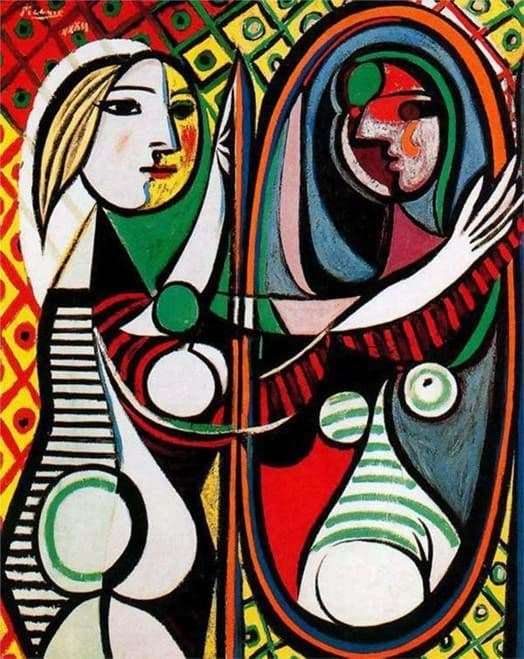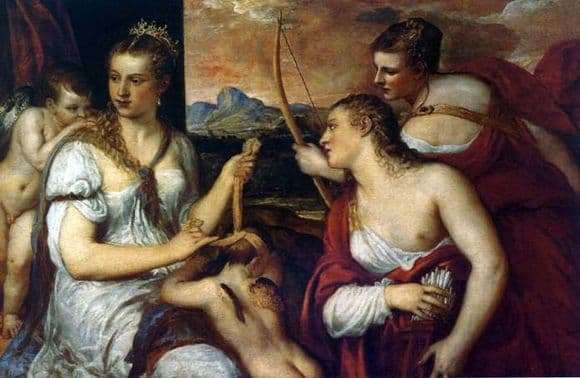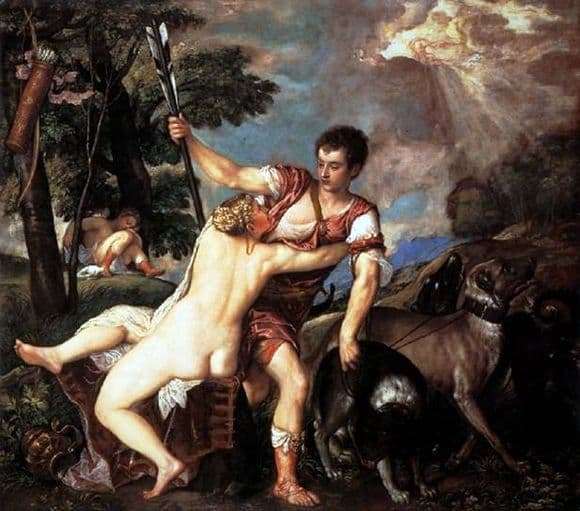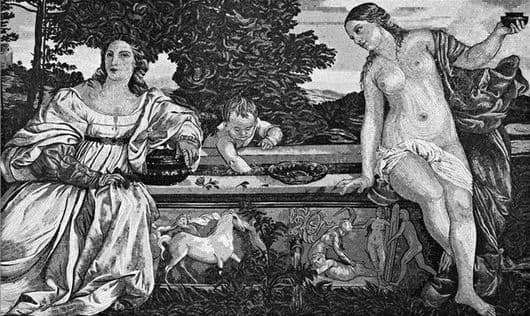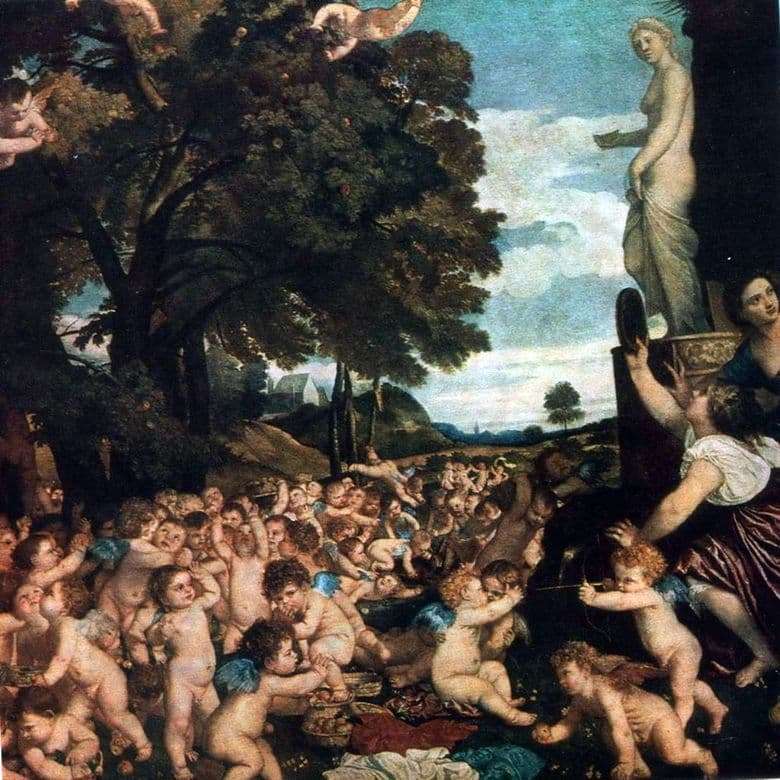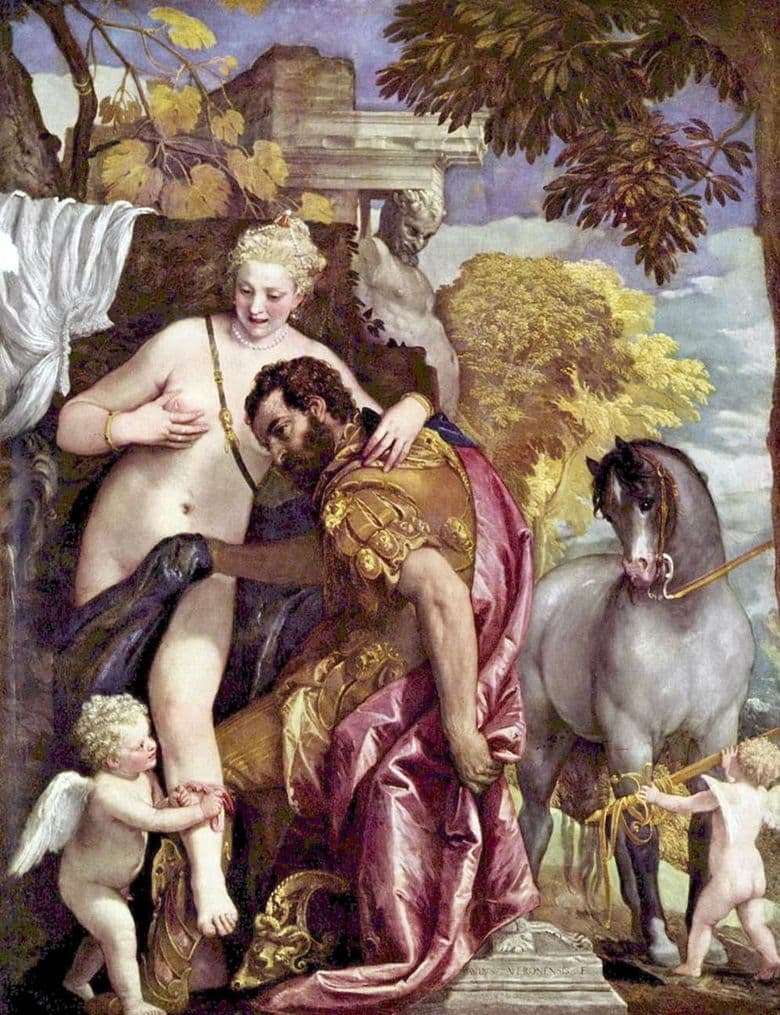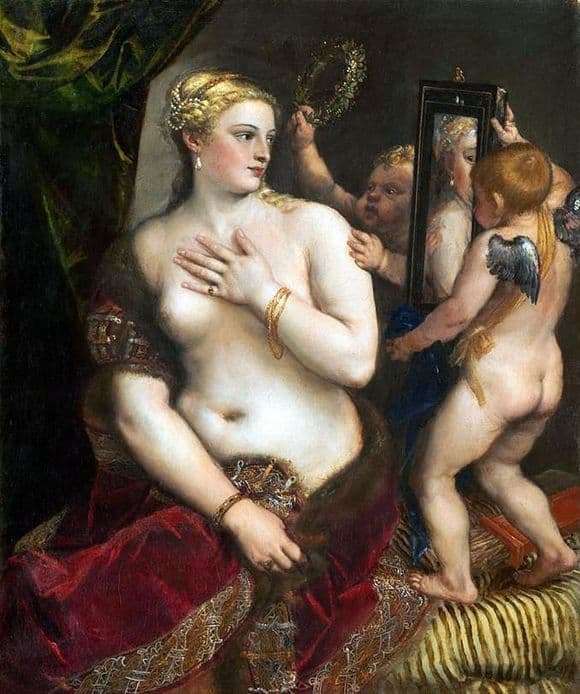
Semi-nude Venus looks in the mirror. She is young and beautiful, her cheeks are rosy, and her skin is as white as milk. She admires herself, assesses herself, covering her chest with her hand and smiling faintly. Her legs are covered with a scarlet cape with a fur edge, there are bracelets on her hands, a pearl barrette in blonde hair, an earring dangles from a pearl drop in her ear.
Mirror for her hold two winged plump carp. One is standing with his back to the viewer, his bright, short-cut back of the head and wings are visible, making their way from the shoulders. The second looks out from behind the mirror, and, sticking to Venus’s shoulder, in order not to fall, stretches to place a precious wreath on her head. He looks admired, he clearly seeks to please the hostess.
Venus in the picture embodies not only the ideal of physical beauty of the time. Yes, she has a soft figure, small hands, a small chest. Yes, she has a correct and beautiful face. But more importantly, with what expression it looks in the mirror. Without the superiority characteristic of some girls who enjoy the way they throw all into dust and smash all rivals.
Without a doubt, characteristic of others who are constantly dissatisfied with themselves and look at their reflection in the eternal search for an unsuccessful perspective, at the wrong time acne. Without narcissistic admiration, when a girl is not able to tear herself away from herself and enjoys her beauty as she once enjoyed her Narcissus.
On the contrary, her posture speaks of chastity. She covers herself without constraint, but from inner need. She does not doubt that she is good, but she is not going to compete with others at all. She does not enjoy her appearance, but simply examines herself with calm dignity, assessing whether she is well enough dressed today.
In the mirror, only a part of it is visible to the viewer, and this part is like a picture in a picture.
Description of the painting by Titian Vechelio “Venus in front of a mirror”

